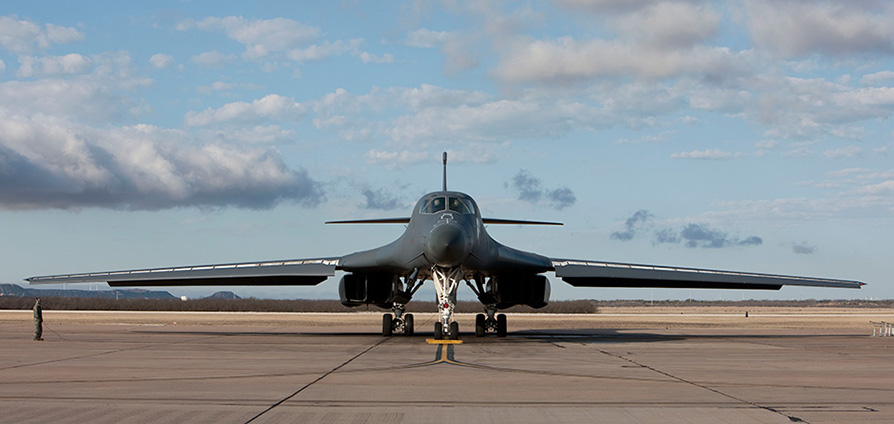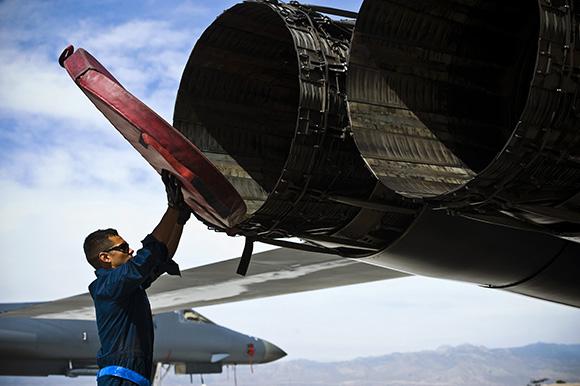Battle of Ramadi, Iraq. On the ground against the militants of the Islamic State, the loyalist government militias supported by operators of the American special departments. In the sky low-observability strategic bombers, designed to hit the Soviet Union's armored infrastructure and used to attack terrorists. They fly in circles, like vultures, ready to drop off to pour their own load of death onto the enemy.
Details of US involvement in the Battle of Ramadi and platforms deployed to support ground troops begin to leak. It is precisely the Air Force that issues these data, confirming the new role of the B-1B Lancer, US bomber with a troubled history.
The B-1B is able to fly for ten hours without refueling and carries with it 84 bombs from 500 pounds (240 kg). Designed to bomb the Soviet Union it has become a troop support platform on the ground. The operational quota of the B-1 makes it less vulnerable than A-10. The latter was deployed in almost all the contexts that saw Americans involved. A-10 that even today are not used in offensive roles but in exclusive coverage.
 "The B-1 is a monstrous flying beast able to drop precision bombs".
"The B-1 is a monstrous flying beast able to drop precision bombs".
A troubled history that of Lancer. The strategic bomber (B-1A) with variable geometry, has evolved into a platform for low-level penetration with cruise missiles (B-1B). After the end of the cold war, the B-1B fleet was deprived of its main purpose for which it was designed and for many years was on the verge of withdrawal from service. As often happens with “private” platforms of the design cause, the new contexts have revived the B-1 program, now made up of sixty bombers on the built 102. The Lancer he is now considered the ideal bomber against global terrorism.
"The B-1B has something that other aircraft do not possess: impressive autonomy and sufficient bombs to hit the enemy with devastating force and with surgical precision. This dual capacity brought the B-1B back into vogue, several times in the announced pre-retirement status ".
The B-1B will not replace the A-10, but is considered a resource in close air support.
The USAF, considering the success of the battle of Ramadi, is thinking of new ones Task Force formed precisely by the A-10 and B-1 platforms. Both can be used in the Close Air Support, although they offer different tactical solutions. While on the one hand the A-10 proves unbeatable in the close CAS, on the other it puts the pilot's life in jeopardy (although it is designed to collect an impressive number of shots). This imposes considerable political responsibility. The B-1B, operating at medium and high altitudes, reduces these possibilities against enemies that do not have the latest generation of missile coverage.
Finally, it should be noted that platforms such as the B-1B are effective when run by JTACs on the ground. To date, the number of US specialists in the battle of Ramadi remains unknown.
 (photo: Boeing / US Air Force)
(photo: Boeing / US Air Force)












